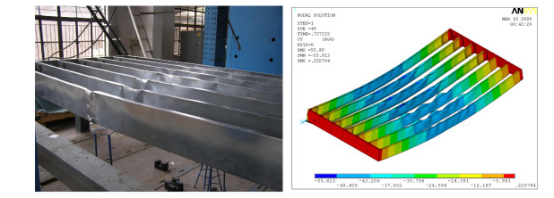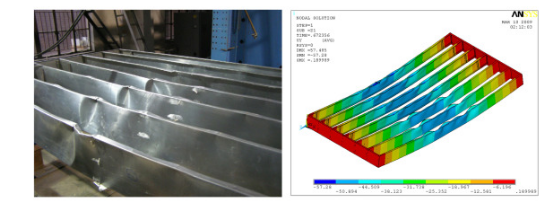[Structural Engineering]
Zhou XH , Shi Y , Xu L , et al. A simplified method to evaluate the flexural capacity of lightweight cold-formed steel floor system with oriented strand board subfloor[J]. Thin-Walled Structures, 2019, 134:40-51.
Keywords: Cold-formed steel; Floor system; Flexural capacity; Experimental investigation; Simplifified method
Highlights:
The research on lightweight cold-formed steel floor system with oriented strand board subfloor was conducted.
Two tests on the flexural capacity of lightweight composite floors were carried out.
The composite action of the floor system is taken into consideration.
It deals with the impacts of screw spacing, joist spacing and sheathing thickness in numerical simulation.
It provides a simplified design method to predict the flexural capacity of the floors.
Abstract:
Lightweight floors built with cold-formed steel C-shape joists and oriented strand board sheathing is one of the primary floor systems in cold-formed steel residential construction. In order to investigate the flexural capacity with accounting for the composite action of the floor system, two tests on the flexural capacity of the floor system were carried out. The test results indicated that the load-carrying capacity of the floor system was significantly affected by the spacing of the screws that connect the joist and oriented strand board sheathing. The primary failure mode of the floor system was the local buckling at the critical section of the C-shape joist although there was tendency of lateral-torsion buckling of the joist. The wavelength of the buckling mode was approximately equal to the screw spacing. A finite element mode was established to simulate the structural behaviour of the floors by commercial software ANSYS and it was found that the numerical results agreed well with the test data. Parametric studies were carried out based on numerical analysis to investigate how the flexural capacity of the floors was influenced by different factors such as screw spacing, joist spacing and sheathing thickness, etc. Finally, based on the test data and numerical analysis results, a simplified design method was proposed to predict the flexural capacity of the floors with accounting for the composite action. The results obtained from the proposed method were validated by both experimental and numerical investigations of two full-scale lightweight floors built with cold-formed steel C-shape joist and oriented strand board subfloor.
Resource:
https://www.sciencedirect.com/science/article/pii/S0263823118303835


